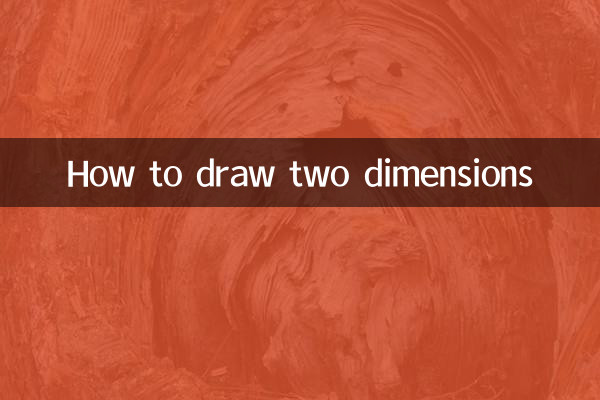How to draw 2D: a complete guide from basics to advanced
Two-dimensional painting has attracted a large number of enthusiasts because of its unique style and wide range of applications. Whether it's anime characters, game characters or original designs, mastering two-dimensional painting skills can make your works more attractive. This article will combine the hot topics on the Internet in the past 10 days to provide you with a structured study guide to help you get started quickly and improve your painting skills.
1. Inventory of popular two-dimensional topics on the entire network (last 10 days)

| hot topics | focus of discussion | heat index |
|---|---|---|
| Proportions of facial features of two-dimensional characters | How to draw standard two-dimensional eyes, nose and mouth | ★★★★☆ |
| Anime Hair Drawing Tips | How to express the flow and layering of hair | ★★★★★ |
| Dynamic pose design | How to draw natural and tense character movements | ★★★☆☆ |
| Color matching and coloring | Two-dimensional color scheme and light and shadow processing | ★★★★☆ |
| AI painting and two-dimensional | How to use AI tools to assist creation | ★★★☆☆ |
2. Basic steps of two-dimensional painting
1.Character head proportions: The heads of two-dimensional characters usually adopt a simplified version of "three courts and five eyes", with the eyes taking up a larger proportion of the face and the chin being pointed.
2.facial features drawing: The eyes are the soul of the two-dimensional character. Pay attention to the thickness of the upper eyelids and the embellishment of highlights. The nose and mouth can be simplified.
3.hair performance: Draw hair in sections, paying attention to the direction and layering of hair strands to avoid being too stiff.
4.body structure: Master the basic proportional relationship (such as head-to-body ratio), and dynamic postures can be designed through the "stickman" framework.
3. Advanced skills: Improve the expressiveness of two-dimensional painting
1.smoothness of lines: Use clean lines to outline and avoid broken lines or jitters.
2.Light, shadow and volume: Enhance the three-dimensional effect through simple shadows and highlights, especially the hair and clothing parts.
3.Color matching: Two-dimensional style often uses bright and saturated colors, and pay attention to the balance between main colors and auxiliary colors.
4.Expressions and dynamics: Convey the character's emotions and personality through exaggerated expressions and movements.
4. Recommended popular tools
| Tool type | Recommended tools | Applicable scenarios |
|---|---|---|
| drawing software | Clip Studio Paint, Procreate | Professional illustration and comic creation |
| Online platform | Pixiv、ArtStation | Inspiration acquisition and work display |
| AI assistance | Stable Diffusion, MidJourney | Quickly generate drafts or color schemes |
5. Summary
Two-dimensional painting requires a combination of basic skills and creative expression. It can also be seen from the hot topics that the proportion of facial features, hair drawing and dynamic design are the focus of everyone's attention. With practice and tools, you can gradually improve your drawing skills. Whether you are a beginner or an advanced painter, I hope this guide can provide you with practical help!

check the details

check the details